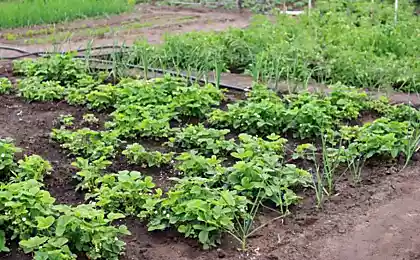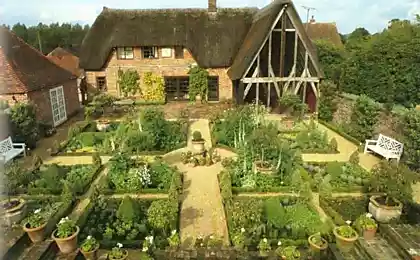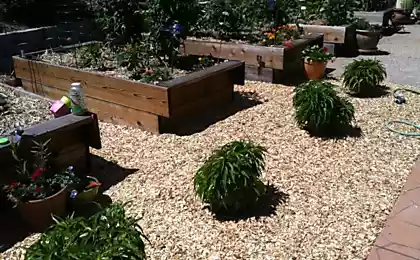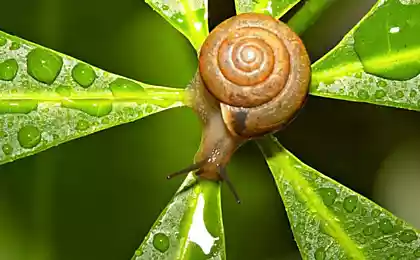167
An effective tool that will help to get the whitefly out of the garden
Whitefly is an incredibly prolific moth that can leave a summer resident without a harvest. In warm and humid climates, her colonies are covered like a white blanket. As a result, the affected leaves become dry and twisted. Therefore, a dangerous insect should not be given even the slightest opportunity to settle in greenhouses and a garden. And how to deal with whitefly, we will tell in this article.

How to deal with whitefly Preventive measures
As practice shows, folk remedies do not help much against such a harmful pest as whitefly. And if he managed to gain a foothold on the site, they cease to be effective. And the most reliable way to get rid of whitefly forever is the use of the insecticide Teppeki.

This drug is also used to destroy aphids, thrips, spider mites, shields. It stops feeding insects immediately after spraying. It acts on pests that have not been treated, and is not dangerous to humans.
The price of a 500-gram package for someone may not be affordable. But in many stores, the product is sold by weight. For one treatment, even 1 gram of small granules will be enough. But the amount of water depends on the culture you are going to process.
The granules must be dissolved immediately before processing. It's quite difficult to do that. Therefore, you will need constant stirring. First, it is done in a small amount of warm water. And then bring the concentrate to the desired volume according to the recommendations. For potatoes it is 3 liters, for flowers - 4-8 liters, for apple trees - 7 liters of water.

Plants should be sprayed early in the morning or at sunset. The first treatment usually falls in early spring, when whitefly larvae appear. Keep in mind that after 8-10 days, larvae will hatch, which during spraying were eggs. Therefore, the treatment should be repeated 2 times with an interval of 7-8 days.
We add that, according to background information, 200 g of the drug is enough to control the whitefly on the site per hectare. And the protective properties of "Teppeka" last 30 days. So, the last processing of crops should be done no later than a month before harvest. As we said, the drug is harmless to humans and bees. But when spraying, we recommend using gloves, glasses and a respirator.
Solution based on soda can drive annoying slugs, insects and other vegetable pests. However, along with soda, mustard and edible yeast work well. Thanks to natural remedies, your garden will be free of pests. So it’s time to learn how to use them for a good harvest.

How to deal with whitefly Preventive measures
- quarantine
Often the pest gets to the site along with the purchased seedlings. Therefore, before planting the plant, it is better to first keep it in a separate room.
- autumn disinfection
After harvesting, all plant residues must be removed. The fact is that they can remain larvae that can overwinter and continue to reproduce in the spring. For this reason, do not forget about the deep digging of the soil.
412294 - Mechanical traps
Some gardeners claim that they were helped by placing glue traps near the plantings. The whitefly is attracted by the yellow color, and insects that have fallen on the sticky layer can no longer take off. - Regular weeding
The voracious pest does not disdain weeds. And sometimes they move to garden cultures from them. So do not forget to regularly remove weeds around the beds.
As practice shows, folk remedies do not help much against such a harmful pest as whitefly. And if he managed to gain a foothold on the site, they cease to be effective. And the most reliable way to get rid of whitefly forever is the use of the insecticide Teppeki.

This drug is also used to destroy aphids, thrips, spider mites, shields. It stops feeding insects immediately after spraying. It acts on pests that have not been treated, and is not dangerous to humans.
The price of a 500-gram package for someone may not be affordable. But in many stores, the product is sold by weight. For one treatment, even 1 gram of small granules will be enough. But the amount of water depends on the culture you are going to process.
The granules must be dissolved immediately before processing. It's quite difficult to do that. Therefore, you will need constant stirring. First, it is done in a small amount of warm water. And then bring the concentrate to the desired volume according to the recommendations. For potatoes it is 3 liters, for flowers - 4-8 liters, for apple trees - 7 liters of water.

Plants should be sprayed early in the morning or at sunset. The first treatment usually falls in early spring, when whitefly larvae appear. Keep in mind that after 8-10 days, larvae will hatch, which during spraying were eggs. Therefore, the treatment should be repeated 2 times with an interval of 7-8 days.
We add that, according to background information, 200 g of the drug is enough to control the whitefly on the site per hectare. And the protective properties of "Teppeka" last 30 days. So, the last processing of crops should be done no later than a month before harvest. As we said, the drug is harmless to humans and bees. But when spraying, we recommend using gloves, glasses and a respirator.
Solution based on soda can drive annoying slugs, insects and other vegetable pests. However, along with soda, mustard and edible yeast work well. Thanks to natural remedies, your garden will be free of pests. So it’s time to learn how to use them for a good harvest.
There is a gap between the concept of grooming and nails.
As the leader of the group “Lisapet battalion” Natalia Falion manages not to lose optimism
























